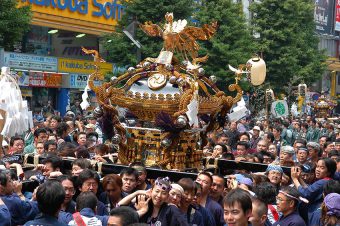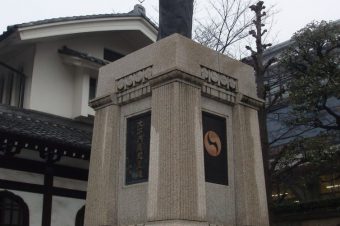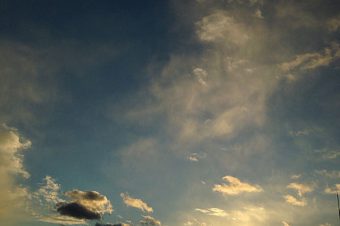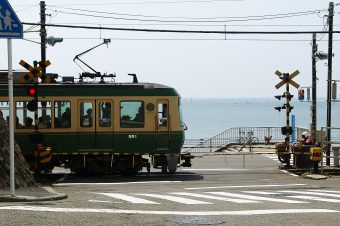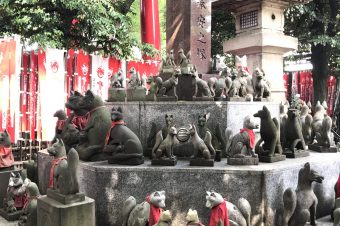This past week I had the opportunity to attempt zazen meditation at both a Rinzai-zen school and a Soto-zen school. Since the differences between these two schools is highly debated, I will explain only what I, an English-speaking foreigner, could plainly see as the differences.
To practice Rinzai-zen, I visited the Kencho-ji Temple in Kamakura. The class at Kencho-ji focused very heavily on posture and sitting position. The monks explained how to sit and hold your hands, and throughout the entire experience monks would come and correct you if your positioning was wrong. The most important factors were to keep your back straight, shoulders back, and eyes focused at a 45-degree angle to the floor. It was crucial to keep your eyes focused and to move them as little as possible. Despite what I had previously believed, I was told to keep my eyes open. Apparently closing your eyes during meditation is uncommon because it allows your mind to daydream instead of focus, and there is also a good chance you will fall asleep. The most proper sitting position was to sit cross-legged with each foot on the opposite thigh. This was a very difficult position, not only for foreigners, but for most Japanese people as well. We were told that if we could not do this position we could lower one or both legs.
As a group, we sat in zazen for 15-minute increments. After two sessions, we were asked to walk twice around the outside of the temple while holding our hands in a specific position. This was a sort of walking meditation, which I had never heard of before.
Another part about zazen that I had never heard of before was the keisaku. The keisaku, or “encouraging stick,” is a large paddle-like stick that a monk carries around the room. If you find that you cannot focus or are starting to feel tired, you raise your hands into “gassho,” which means placing your palms together as if you’re praying. The monk will stand in front of you and you will bow to each other. Then, you must lean over and hold both your elbows on the floor, making your body into a ball shape. The monk will then tap each shoulder-blade area twice, making a total of four taps. After he is finished, you must bow to each other once more. Finally, you may return to meditating.
At first, the idea of the keisaku was frightening to me. I felt it odd that people were asking to be hit by a stick. However, the keisaku is not used as a punishment but rather as encouragement for you to wake up and concentrate.
To practice Soto-zen, I visited the Sojiji Temple in Yokohama. This zazen experience was much shorter, because it was not the only reason I was there. However, I was able to see some significant differences between the two forms of zazen.
The biggest difference to me was the atmosphere. At Kencho-ji, we sat in a large open space that had doors open to the outside. The room was bright and we could hear people walking around and talking outside. Also, all of us sat on the ground in a circle facing each other. Absolutely opposite, the room at Sojiji was dark and everyone faced the wall. We all sat on zufu cushions and on elevated platforms. Before sitting down we were instructed how to handle the cushion and how to sit upon it, which was very different from Kencho-ji.
Another big difference was the keisaku. At Sojiji, to signal that you want to be tapped by the keisaku, you must tilt your head left, rather than place your hands in gassho like at Kencho-ji. Also, at Sojiji, you did not position yourself into a ball-shape and you were only tapped twice. I felt that the taps were far harder and louder at Sojiji than at Kencho-ji.(This is because when I practiced Rinzai-zen, there were just foreign people so it was for beigner but when I practice Soto-zen,there were a lot of japanese.they get used to do it.)
I realize that the differences between the two temples makes Sojiji seem frightening, but this is not at all the case. I actually think that I preferred the Soto-zen at Sojiji because the dark room and position facing the wall helped me focus much more on my meditation.(This is my expeiemce. I recommend to practice both of them. It is depend on the person.)
While both Rinzai and Soto are both forms zazen, they are still very different. I definitely believe that it is a personal preference on which is better suited for a person, and I would greatly suggest to foreigners that they try both types of zazen so they can experience the differences themselves. By the end of the classes I felt a new level of understanding and respect for Buddhist monks and Buddhist followers.
